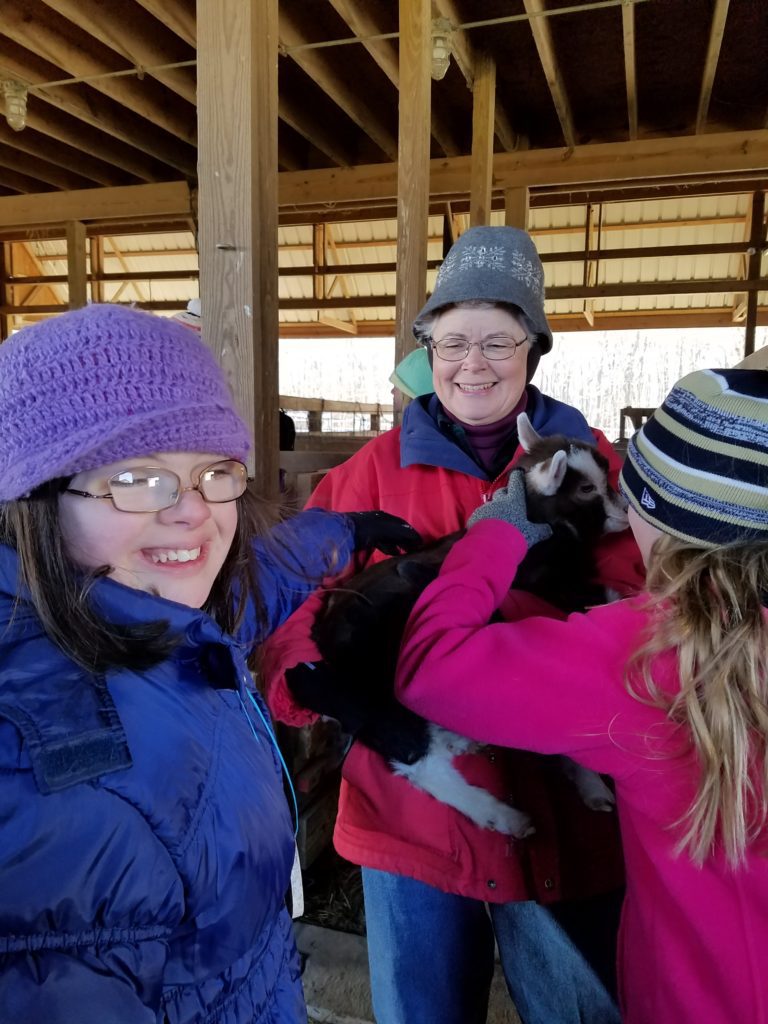A Standards-based Curriculum Focused on Life Sciences for 5th Grade Classes
Messages from the Earth is a five-day life science curriculum for fifth-grade students. Not only do the students learn life science concepts, they leave with a new appreciation for the natural world, the farm, and the source of the food on their dinner plate. All activities are interlaced with connections to how their food, water and oxygen are made available to them. They will pass through the barn and pastures where the concepts are at work and watch as a cow turns the energy from the sun into something we can eat.
For information, contact: Erin at 740- 363-2548 or at erin.fisher@stratfordecologicalcenter.org
- Messages from the Earth activities are engaging for the students, teaching them life science concepts in fun and unforgettable ways.
- The activities are designed to reinforce concepts of life science appropriate to the 5th grade Ohio Revised Science Standards.
- The program stretches across three seasons, with the students coming 2 days in the fall, 1 day in winter, and 2 days in the spring.
- Each session will take advantage of the season, farm and State Nature Preserve.
- The cost is $65 per student. Teachers are free.
- Minimum number of students is 20. Maximum is 60.
Angelina and the Magic of Stratford
This is the story of Angelina and Stratford’s 5th grade life science program called Messages from the Earth.


Angelina and the Magic of Stratford
This is the story of Angelina and Stratford’s 5th grade life science program called Messages from the Earth.
Program Components
Fall: Flow of Energy & Matter in an Ecosystem
Students:
- Come on both a Monday and a Tuesday.
- Concentrate on the flow of energy captured from the sun and passed up the food web.
- Learn about photosynthesis when they simulate creating a carbohydrate inside a huge leaf.
- Learn why organisms do not pass all the energy they require up the food chain.
- Compete in a race to determine whether a hamburger or a peanut butter sandwich requires more energy to produce.
- Get their whole body involved while studying three cycles: air cycle, water cycle and nutrient cycle.
Winter: Cycles and Changes in an Ecosystem
Students:
- Come one day
- Learn how humans manipulate our environment as we strive to increase our productivity.
- Visit the maple sugar shack and taste how the carbohydrates we talked about in the fall are now in our maple syrup.
- See firsthand how an introduced species can affect an ecosystem.
- Learn how a greenhouse works.
- Play a game to review the concepts taught in fall by using a human-sized game board.
- Build a compost pile and learn they would want one.
Spring: Interrelationships of Organisms in an Ecosystem
Students:
- Come on both a Monday and a Tuesday.
- Learn there is a complex dependency amoung organisms.
- Perform the jobs of different organisms in an ecosystem and learn how they depend on one another.
- Pretend they are a new species and attempt to adapt to their environment.
- Observe how organisms are perfectly adapted to their niche.
- Try to make topsoil as they learn the source of the minerals plants use.
- Work with a balance and learn how humans can impact the environment for good or bad.
- Learn about the importance of diversity as they simulate bees gathering pollen.

